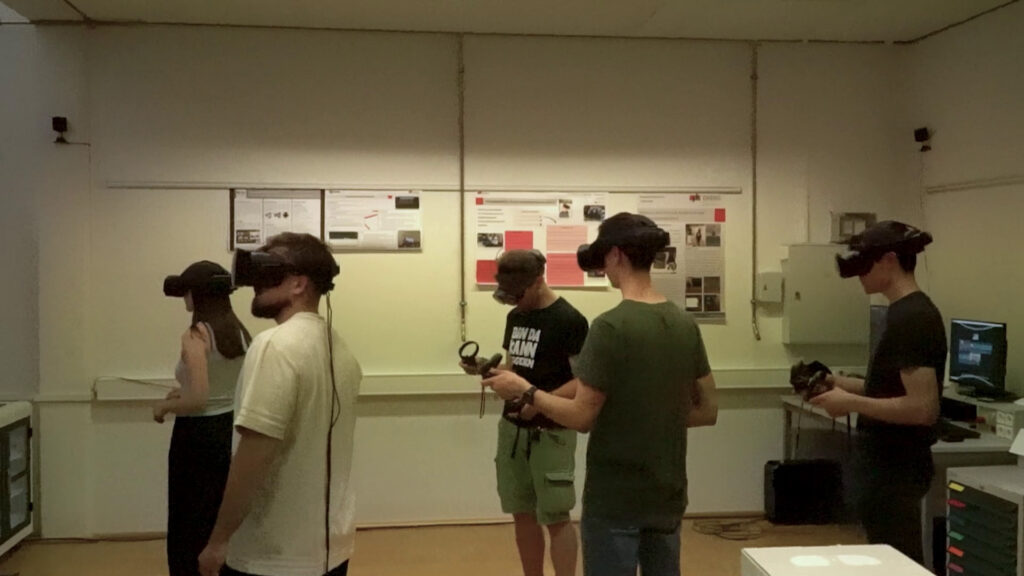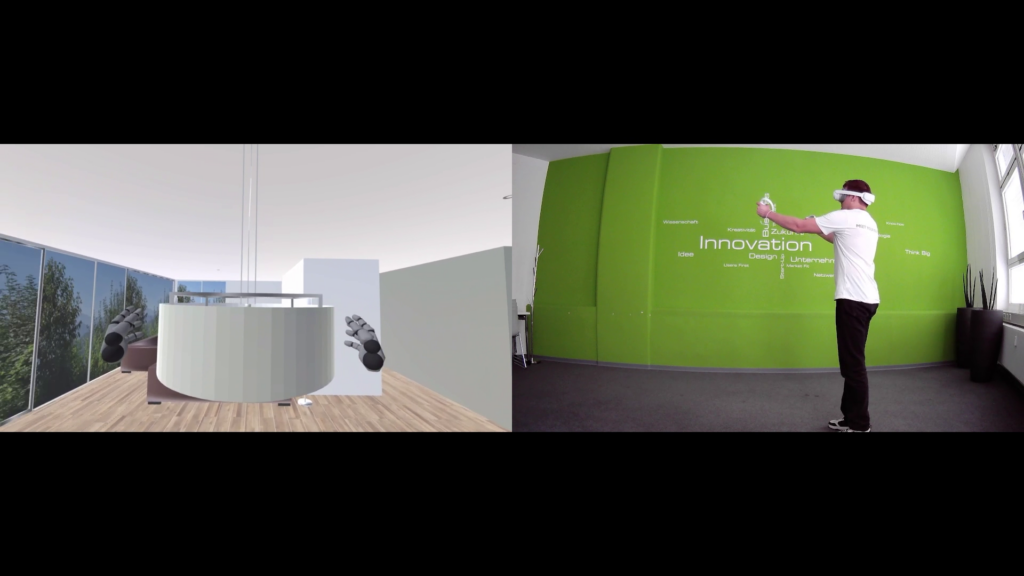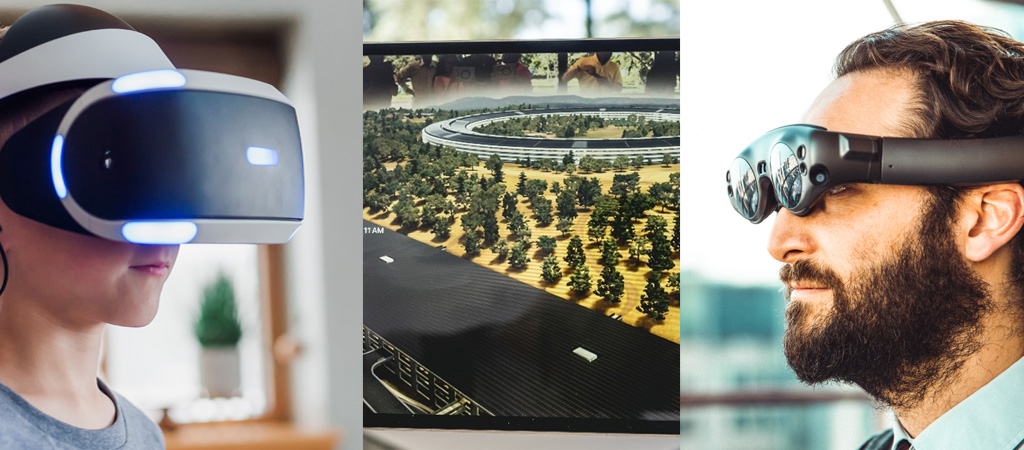In today’s labor-intensive world, workplace ergonomics is crucial. Especially in production, where employees perform repetitive tasks for hours, it is important to ensure they work in an ergonomically favorable environment. Fortunately, modern technology provides solutions to optimize ergonomics. One such solution is the VR software XR-EASY, which enables companies to virtually design the workplace and make ergonomic improvements. In this blog article, we will present tips and tricks for workplace ergonomics in production and explain how XR-EASY can help.
Why is Workplace Ergonomics Important?
Workplace ergonomics refers to designing the work environment to promote the physical and mental health of employees. Good ergonomics can lead to increased productivity, reduced injuries, and improved overall well-being. By implementing ergonomic principles, companies can enhance efficiency and increase employee satisfaction.
The Importance of Ergonomics in Production
Production is often associated with repetitive movements, heavy lifting, and potential hazards. Poor ergonomics can result in musculoskeletal disorders, fatigue, injuries, and increased absenteeism. Therefore, implementing ergonomic guidelines in the production environment is of great importance to ensure the well-being and performance of employees.
Tips and Tricks for Workplace Ergonomics in Production
This section will present various tips and tricks for improving workplace ergonomics in production. It includes workplace design, proper posture and movement, lifting and carrying techniques, tool and machine adjustments, as well as aspects such as lighting and noise.
Workplace Design
Good workplace design is crucial for optimal ergonomics. The workspace should provide sufficient space to move freely and perform work processes efficiently. Ergonomic chairs, height-adjustable tables, and well-positioned work tools are essential elements to minimize bodily strain.
Posture and Movement
Proper posture and regular movement are fundamental for workplace ergonomics. Employees should strive for an upright posture and avoid excessive strain on their joints. Adopting different working postures and taking short breaks for stretching and relaxation are also recommended.
Lifting and Carrying Techniques
In production, lifting and carrying heavy objects are often required. It is important to learn the correct techniques to avoid injuries. Employees should lift heavy loads with their legs, not their back, to minimize pressure on the spine.
Tool and Machine Adjustments
Tools and machines should be adjusted to meet employees’ individual needs. Improper tool handling can lead to excessive strain. Ergonomic adjustments such as padded handles, vibration-dampened tools, or easily accessible controls can improve work processes and reduce the risk of injuries.
Lighting and Noise
Adequate lighting and noise reduction are other important factors for an ergonomic production environment. Sufficient lighting reduces eye strain, while noise reduction measures can include soundproofing walls or providing ear protection.
Introduction to XR-EASY: The VR Software for Optimal Ergonomics
XR-EASY is an advanced VR software that helps companies virtually design the workplace and make ergonomic improvements. It provides a realistic and interactive environment to simulate work processes and identify potential ergonomic issues.
How XR-EASY Works
XR-EASY allows users to create a virtual version of their workplace and adjust various ergonomic factors. Using VR goggles, employees can explore their work environment and perform virtual movements to test their impact on their bodies.
Benefits of Using XR-EASY
The use of XR-EASY offers numerous advantages. Companies can identify potential ergonomic risks before they occur physically and make corresponding adjustments. This saves time and costs for subsequent ergonomic optimizations. Employees can actively contribute to the planning process and propose solutions to improve their work situation.
How XR-EASY Can Improve Workplace Ergonomics
XR-EASY provides various ways to improve workplace ergonomics in production.
Virtual Workplace Design
With XR-EASY, companies can virtually design the workplace and try out different configurations. They can adjust the position of machines, tools, work surfaces, and other elements to optimize ergonomic conditions.
Simulation of Movement Sequences
Using VR software, employees can simulate movement sequences and identify potential strains or discomfort. This enables them to develop more efficient movements and design more ergonomic work processes.
Identification of Potential Risk Factors
XR-EASY allows for early identification of potential risk factors for injuries or musculoskeletal disorders. By simulating work processes, companies can recognize ergonomic issues and find appropriate solutions to minimize the risk of injuries.
Real-Time Ergonomic Adjustments
One of the main advantages of XR-EASY is the ability to make real-time ergonomic adjustments. Employees can test various ergonomic options and receive immediate feedback on their effectiveness. This allows for iterative improvement of the workplace to continuously optimize ergonomics.
Successful Implementation of XR-EASY in a Manufacturing Company
An example of a successful implementation of XR-EASY to improve workplace ergonomics can be found at the lightning protection specialist DEHN. The company has been using R3DT’s VR software in work system planning and factory planning since 2019 to identify and solve ergonomic problems.
In an interview with Michael Mohren, Head of Process Planning at DEHN, it becomes clear how XR-EASY has helped consider ergonomic aspects in the workplace and optimize work processes. Particularly in assembly process planning, VR technology proves to be extremely valuable as employees have the opportunity to perform work processes virtually and identify potential strains or discomfort. By simulating work processes, ergonomic issues can be identified early on, and appropriate solutions can be found to minimize the risk of injuries.
Another advantage of XR-EASY lies in the virtual design of the workplace. DEHN can use VR software to virtually design the workplace and try out different configurations to optimize ergonomic conditions. This allows the company to identify potential risk factors for injuries or musculoskeletal disorders and make real-time ergonomic adjustments.
Conclusion: Workplace Ergonomics and the Role of XR-EASY
Workplace ergonomics is crucial, especially in production. By implementing ergonomic principles, companies can improve the health, safety, and performance of their employees. XR-EASY offers an innovative solution to optimize workplace ergonomics by allowing companies to virtually design the workplace, simulate movement sequences, and identify potential risks. By using XR-EASY, companies can create a more efficient and safer working environment that benefits both employees and the company in the long run.


